Instructions
How to use this site
This site is designed for users to select among various plant traits for identifying features in order to narrow down a search. The video below provides an overview of how to use the Turf and Landscape Weed ID tool:
If you are unsure of a selection, leave it blank or unselected. The best searches will result from the traits you are sure of. You may uncheck a selection at anytime to remove that search parameter.
To get started, select among Grass-like or Broadleaf weeds from the home page. Alternatively, you can click the Weeds ID link in the top bar to access all plants in the database.
When you have narrowed your search click on the plant to return its profile. On the profile page, you will see images of the plant and a list of its identifying traits. You may toggle between the Identity and Control buttons to bring up different information about the same plant. The Identity page is the default page first displayed so you can confirm the identification of a plant in question. The Control page lists specific chemical controls available in New York State for that weed.
Where controls are listed, they are broken into two categories: conventional and minimum risk. Please refer to the About link in the top bar for a full explanation of these categories. If a control method has a red “Label” link next to it, you may click this link to launch a new window to that product label on the Cornell Product, Ingredient, and Manufacturer System (PIMS) website.
It is the legal responsibility of all site users to know and follow all relevant label instructions. See the Disclaimer for more information.
Weed Identification Terms
The following section explains the terms and options associated with the search function of this website. If you are unfamiliar with plant morphology (physical form or external structure) this will be a good initial resource. The terms presented here are simplified compared to those a trained botanist would use, but should be useful for most audiences.
 Broadleaf
Broadleaf
If this is selected, broadleaf (dicot) plants are returned from the database. Dicots have two seed leaves upon germination. Typically, their growing point is aboveground, making mechanical control by mowing feasible in most cases.
 Grass-like
Grass-like
If this is selected, grass-like plants (monocots) are returned from the database. Monocots have one seed leaf at germination. Leaves are linear and veins in the leaf are roughly parallel, resulting in the typical grass leaf blade. Growing points are at or just below the soil surface. Leaves extend from the central sheath.
Auricles
At the base of a leaf blade where the leaf joins the sheath, auricles are small projections that may surround the sheath opposite the leaf blade. Auricles are often described as “claw-like” and may be absent, short, or clasping. In grass-like weeds, auricles are a common identification feature, though not all monocot have auricles. Short auricles extend past the leaf blade, but do not fully encircle the sheath opposite the blade. Clasping auricles encircle the sheath, often crossing. This search option will only appear if the search includes grass-like species.

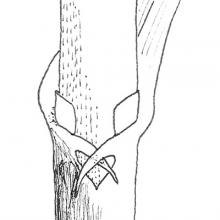
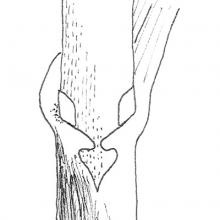
Ligule
When carefully pulling the leaf blade away from the sheath for grass-like species, the ligule will be exposed where the blade joins the sheath. Ligules may be membraneous, fringe, or absent. Ligules often appear as collars attached to the leaf, but cupping the sheath at the very base of the leaf. Membraneous ligules are continuous, translucent sheaths, similar to an onionskin that extends up the sheath from the leaf blade. Fringe ligules are fine, bristly hair-like projections extending up the sheath. This search option will only appear if the search includes grass-like species.
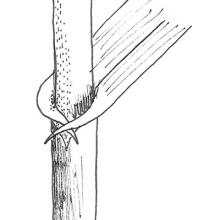
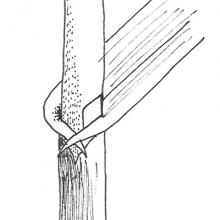
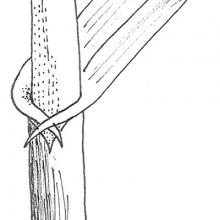
Vernation
Leaves unfurl from the sheath as they expand in grass-like species. Leaves may be rolled, folded, or triangular. Vernation refers to the shape of leaves as they expand from the sheath. Rolled leaves unroll from the bud as they extend. Folded leaves begin in a tight v-shaped fold before they extend. Triangular vernation is reserved for sedge-like species, where folded leaves result in a triangular sheath cross-section. This option will only appear if the search includes grass-like species.
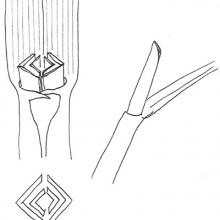
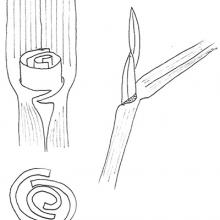
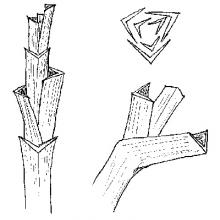
Stature
This is a broad, general description of the growth-form of the plant. Possible options include upright, clump, spreading, vine, or rosette. Weeds may exhibit multiple statures depending on growth stage, environmental conditions, or other factors. Therefore, plants in the database may have multiple statues. Upright plants grow mainly as the name suggests, upright, tending to be taller than wide. Clump plants have a mound-like habit, and are equally wide as tall. Spreading plants have a horizontal habit, creating a ground cover. Vines climb other plants, though may be self-supportive initially. Rosettes are roughly circular cluster of leaves remaining close to the ground surface. Frequently, biennial plants exhibit a rosette in the first year and grow upright in year two, producing flowering structures.
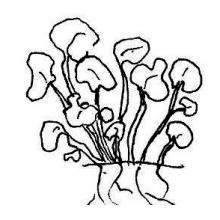
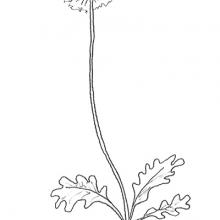
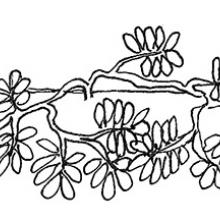
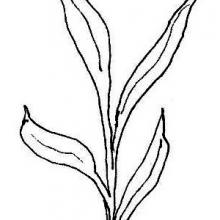
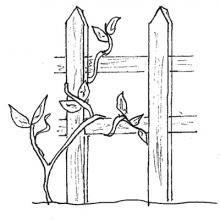
Leaf Margin
The margin is the edge of the leaf. Margins may be entire, lobed, toothed or wavy. The leaf margin search terms presented here are simplified for ease of use. An entire margin is roughly smooth, containing no major indentations, points, or other features. Lobes are major divisions of the leaf, not reaching the central midrib or vein. A toothed margin has fine, saw-like to major, coarse points, resulting in a tooth-like appearance. Wavy margins are not pointed, but have fine to deep, smooth indentations. Grass-like weeds will have an entire margin.
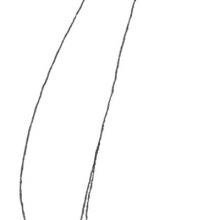
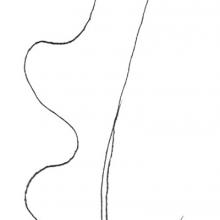
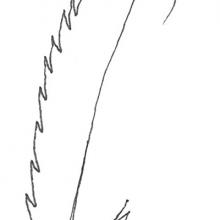
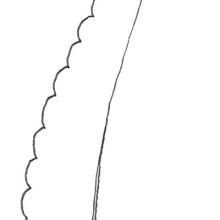
Leaf Division
A key identification feature for broadleaf plants is how the leaves are divided. Leaves may be simple, pinnate, palmate, or pinnately compound. Simple leaves are undivided, meaning no indentations reaching the midrib or central vein are present. A compound leaf is divided into multiple parts by indentations that extend to the midrib, resulting in multiple leaflets. Pinnate leaves are divided symmetrically along the midrib creating a leaf that resembles a feather. Palmate leaves are divided radially from the midrib, resembling the palm of a hand. Doubly compound leaves are where leaflets are again divided to their midpoint by indentations in the margin. Pinnately compound leaves are twice-pinnately divided, creating a leaf similar in appearance to a fern frond.
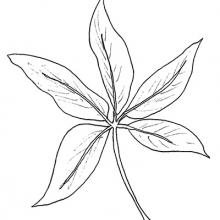
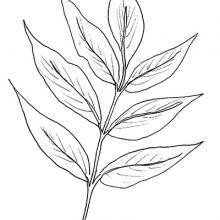
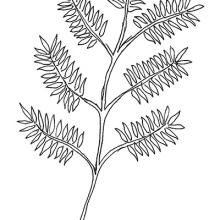
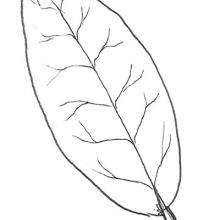
Leaf Shape
Shape of leaves is a common way to identify weeds. Typically, broadleaf plants vary much more in their shape than grass-like plants and are the focus of this selection category. Leaves may be elongated, lanceolate, oval, hear/spade, triangular, round, fern-like, trifoliate, or diamond. These categories are simplified from botanical references for the ease of use. An elongated leaf is longer than wide, but narrower than an oval leaf. Lanceolate leaves are the longest and narrowest of the broadleafs. Oval leaves are longer than wide, but wider than either elongated or lanceolate leaves. Heart or spade shaped leaves are pointed at the tip and rounded at the base with an indentation where the petiole joins the leaf blade, creating a heart shape. Triangular leaves are roughly triangular in shape where the leaf base is flat or not rounded like a heart. Round leaves are roughly round as opposed to oval and the petiole may attach in the center of the leaf or at the base. Fern-like leaves are finely divided creating a fern-like or feathered appearance. It is not necessary for fern-like leaf shapes to be compound, though many are. Trifoliate leaves have three distinct leaflets, which may meet at a common point or may be two leaflets with the third extending from the middle. Diamond shaped leaves have a roughly diamond shape with four nearly straight sides, a major axis, and a minor axis. There is a fair amount of subjectivity in assigning leaf shape. It may be useful to check multiple shapes if you encounter a leaf that does not clearly fall into one of these categories.
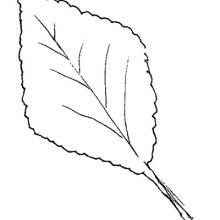
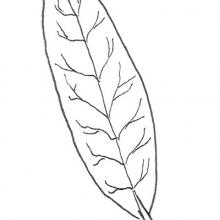
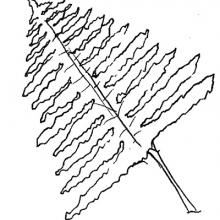
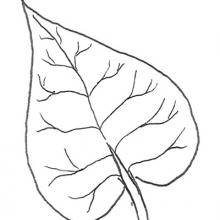
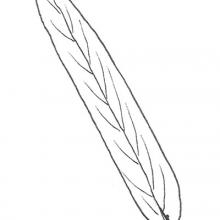
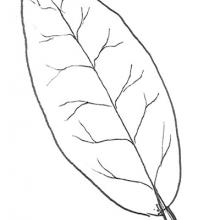
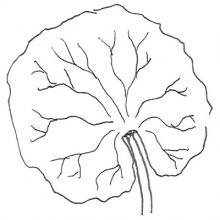
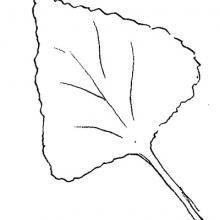
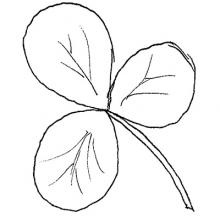
Inflorescence location
The reproductive parts of plants, inflorescences, vary in location. Inflorescences may be terminal occurring at the ends of stems or axial occurring in at nodes where leaves and stems join. Some plants have both terminal and axial inflorescences and can be found under either list.
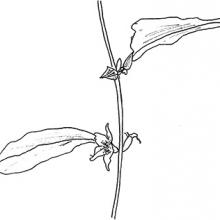
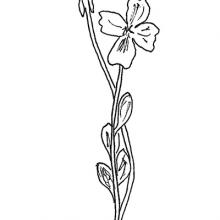
Inflorescence color
Reproductive structures vary widely in color among plants. Inflorescence color first provides broad, overall color options. Flowers of different hues of a single color will be founds within that color (e.g. light pink to dark pink will be found under pink). Flowers with multiple colors (e.g. white with yellow center) will be found in both white and yellow. Furthermore, flowers that exhibit a range of colors will be found in any of the respective colors. In a plant’s profile page, there are additional notes describing the specific inflorescence color variations for that plant.
Help
If you have questions, comments, or suggestions about using this search, please contact us.
